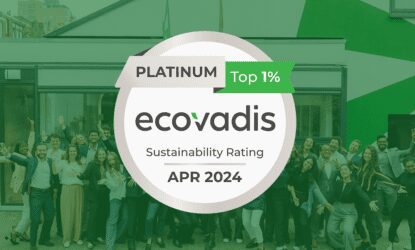 Updates in California: New climate reporting obligations under SB 253 & SB 261
Updates in California: New climate reporting obligations under SB 253 & SB 261
How a post-growth society look like for the global economy?
The limits of economic growth are well known. From Malthus to John Stuart Mill all the way to the Club of Rome’s 1972 seminal ‘The Limits of Growth’ report. We are well aware that our current mindset is not sustainable.
With household debt through the roof and environmental collapse looming ahead. It seems like we have been (successfully) persuaded:
“To spend money we don’t have on things we don’t need to make impressions that won’t last on people we don’t care about.”
The incompatibility of capital accumulation with ecological stability has therefore made a search for alternative trajectories a necessity.
To frame our second discussion, the team viewed Tim Jackson’s TED talk: An economic reality check. We also read/listened to these two articles on prosperity without growth and the impact of de-growth on businesses.
The big problem that we identified was that the focus on GDP was unsustainable, but what is the solution? De-growth, no growth at all or the middle ground which can be identified as green growth?
Utopic vs. Realist vision on post-growth
The ecological critiques of the current economic structures are varied. De-growth is one of them. It is a vision that emphasises on downscaling and putting a limit to production. Thereby encouraging a shift in focus from economic growth towards enhanced livelihoods and ecological preservation. However, some might consider this to be utopic and not necessarily a realistic trajectory.
While many de-growth-like ideals have originated from the global south. The reality is that at present, countries in the global south are economically dependent on the consumerist tendencies of the global north. Hence, the discussion on de-growth remains a western concept. Jumping onto the de-growth bandwagon without thinking of repercussions on global south economies could be dangerous and further fuel inequity.
Is there, therefore, a post-growth scenario that succeeds in uplifting people from poverty and which advocates for reallocation? There was a consensus amongst the team that, while a system change is much needed, green growth is a more realistic endeavour in the short term. According to the OECD, growth at a sustainable level means the:
“Fostering economic growth and development, while ensuring that natural assets continue to provide the resources and environmental services on which our well-being relies.”
The take-up and production of plant-based products can be seen as green growth. Another solution was interjected where companies focus on growth, but a large percentage of the profit is donated to charities. This means that companies still try to grow and generate profit, but they largely give back to society.
Measuring what matters
Following this, there was a discussion on how growth is measured. GDP has been widely used as the main metric to value a country’s stage of development. However, it serves as a poor predictor of health and well-being. By which means do we measure a good life? A considerable amount of work has been put into finding another metric. For example, in the case of Bhutan, the Gross National Happiness Index was developed, calling for a more holistic approach to development.
Furthermore, metrics such as the Physical Quality of Life Index, the Human Development Index, and Green GDP have deepened society’s understanding of meaningful development. However, the crisis of economic measurement continues as the intrinsic motivation for change is lacking and the world’s most powerful are benefitting from business as usual. The risk might also play a part in influencing such behaviour, as change inevitably brings uncertainty.
How to go about change?
In terms of actors having an impact on ecological transition, individuals, the private sector, which includes investors, and governments were identified.
When considering the behaviour of individual actors, values and agency must be considered. Questioning our individual mindsets about consumption is a good starting point. For example, moving away from traditional investing and rather making investments with social, environmental and governance consideration. This will go a long way in promoting a better future. This will in turn enable a shift in the functioning of companies and governments.
Countries today are incredibly economically intertwined, making it a feat to instigate change at the company level. Compliance and regulatory frameworks that are driven by governments and international entities will be essential in making this change a reality.
At the same time, there seems to be a stand-off situation where governments are waiting for a signal from the people, while companies are waiting for governments, leading to a cycle of inaction. How do we break this cycle and who should take the first step in this degrowth movement? One thing, however, is undeniable: the shift needs to be global.
How should businesses react to this discussion?
The third article identifies 3 key strategies companies can adopt:
Degrowth-adapted product design
This involves the creation of products that can have longer lifespans, are modular or locally produced. A great example of this strategy is social enterprise Fairphone. The company produces repairable phones that dramatically extend their longevity.
Value-chain repositioning
This strategy involves exiting from certain stages of the value chain and delegating tasks to stakeholders. For example, a car manufacturer created a recyclable vehicle with crowdsourced designs and crowdfunded the project from potential consumers. Even larger companies such as Lego have taken advantage of this model. Incorporating stakeholder engagement and opening up the dialogue allows companies to adapt faster to degrowth despite production limits.
Regrowth-oriented standard setting
Lastly, firms can lead by creating a standard for the rest of the industry to follow. Patagonia specifically follows an “antigrowth” strategy. They offer a worn-wear store for their apparel and offer free repairs on not only their own apparel but also for products purchased from other garment manufacturers. Companies like Nike and Walmart have asked the company for advice on these practices and H&M has recently piloted an in-store repair facility.
These strategies show how companies can adapt to degrowth that is consumer-driven. It’s also possible to adapt all 3 strategies simultaneously. Effective and inclusive communication with stakeholders across the supply chain is crucial. Framing the project in a way that all stakeholders can buy into it requires considerable effort and adjustment through trial and error.
Google launched “Project Ara” in 2016 in an attempt to create a longer-lasting phone with modular components. While at the same time asking feedback from supply chain actors on how to create standardized parts for their handset. Unfortunately, the project was cancelled, however, it does reveal the possibilities to combine all strategies.
Conclusion
The final question is, therefore, whether incremental, step-by-step, changes is a good way to start? Or if we should centre our attention to rethinking the way societies are arranged by moving the focus away from consumption and production. Whatever the conclusion, this discussion drew our attention to the need for reallocating goods and services and the impending and necessary system change that is coming our way.
Additional reading:
• Degrowth, a vocabulary for a new era (available here)
• A review of the limits to growth debate (available here)
• Degrowth, post-development and transitions (available here)
• Staying within Planetary Boundaries (available here)











